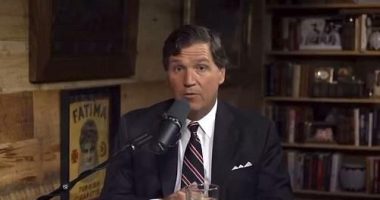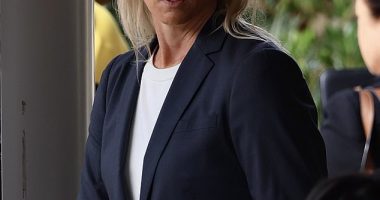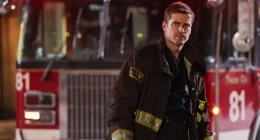Aussie aviation legend Sir Charles Kingsford Smith, braved everything from a blizzard and carbon monoxide poisoning to deliver the special bags of Christmas letters sent from Melbourne after a plane crash scuppered an earlier attempt.
A joyful picture shows the heroic aviator with his flying goggles still on his head, holding a bag containing some of the 52,000 well-wishes from Melbourne on December 16.

Back then, mail took weeks to arrive by ship.
But Kingsford Smith – a heroic former Army and Flying corps pilot – became involved with experimental airmail flights to England after plans were made to extend the service to Australia.
The trial flights were fraught with mishaps, with the first one crashing en route.
A second successful second test flight, partly flown by Kingsford Smith, was so successful, the post office in Darwin almost ran out of stamps, newspapers reported.

Special festive delivery trip
A third trial trip was planned – just in time for Christmas.
It cost one shilling (10c) per half ounce (14g) plus the ordinary surface postage of two pence per one ounce, to post a letter.
Kingsford Smith hoped the venture would lead to a fortnightly service, connecting the two nations by air post for the first time.
The Christmas cards and letters bound for the UK left Melbourne on November 20 in an Avro Ten plane called Southern Sun, piloted by GU “Scotty” Allan.
But the flight never made it to London.
The plane sunk in a rice field after hitting an “extremely glutenous patch of mud” on an airfield in Malaysia during one of multiple refuelling stops, newspapers reported.

Everyone on board survived the crash – as did the mail.
But the festive deliveries were stranded in a damp tropical field, with Christmas fast approaching.
So, the adventurous Kingsford Smith set out to save it, and deliver the Christmas joy.
Kingsford Smith – warmly known as Smithy – left Australia on 30 November to rescue the stranded mail in a sister plane of the Avro 10 that crashed, called Southern Star.
The Australian Post Office helped pay for the mission, with the flight reported to cost £2000.
According to the Reserve Bank of Australia, that’s worth approximately $195,000 in modern currency when accounting for inflation.
But it was quite a journey, with more than a dozen stops as planes could not get far without refuelling back then.

Kingsford Smith had to contend with delays due to fog, a blizzard in Italy, and carbon monoxide poisoning.
He even had to get a push from bystanders to take off from Le Touquet, just over the English Channel in France, papers reported.
The famous pilot – well known for setting records for the first trans-Australian, trans-Tasman and trans-Pacific flights – made the risky decision to ditch his wireless navigator along the way to lighten the weight.
But he made it, safely delivering the first Christmas airmail sent from Australia to England on 16 December.
“I am proud of bringing the first direct air mail to England, and I hope it will be the forerunner of a regular service from’ Australia,” Kingsford Smith said at the time.
Barnes said airmail is now carried from the UK to Australia on aircraft that take less than 24 hours.
“So it’s quite remarkable that in 1931 Charles Kingsford Smith flew for over two weeks to deliver Christmas mail from the UK to Sydney, encountering countless risks and adversity on the way,” Barnes added.

Return mission to Australia
Read Related Also: 20K migrants waiting in Mexico to cross US border when Title 42 ends, El Paso mayor says
But Kingsford Smith’s journey was not done there. He had to repeat the trip in reverse to carry all the Christmas mail gathered in England for Aussies.
And that wasn’t an easy feat either.
Kingsford Smith’s flight was scheduled to leave London on 22 December – already too late for Christmas deliveries.
But mishaps caused a further delay until 7 January 1932.
He didn’t reach Sydney until January 21 – but those letters were finally handed out to their recipients.
The Australian War Memorial has one of them.
Robyn van Dyk, head of the museum’s research centre, said the recipients would have been astonished.
“It would have been so exciting to get a Christmas letter via the air,” she told 9news.com.au.

Sadly, the series of mishaps ended Kingsford Smith’s hopes of his company taking on the official airmail service.
It would be a few more years before international air mail got off the ground.
Mail from Australia to London now took 13 days by air, instead of 32 days by sea.
Tragic end to pioneering life
But their plane, Lady Southern Cross crashed off the coast of Burma, while flying at night, bound for Singapore.
Locals were offered rewards for any information on the missing heroes.
But their bodies were never found.
A year and a half later, an undercarriage leg and wheel from their plane, was discovered by fishermen.

That is now on show at the Powerhouse Museum in Sydney.
Experts figured out the plane had probably come to rest 27m down on the bottom of the sea, off the coast of Aye Island.
In 2009 filmmaker Filmmaker Damien Lay reckoned he’d found it on sonar, but it has never been recovered.

Pilot’s cheeky message in the sky above Russia’s neighbour
Smith left behind his son, Charles Jnr, and wife, Mary, Lady Kingsford Smith.
He remains one of Australia’s most renowned heroes.
Sydney’s Charles Kingsford Smith Airport was named in his honour, and he was featured on the nation’s $20 note for years in tribute to his pioneering ventures.
Suburbs and street names across the nation take his name.
Fittingly, Kingsford Smith’s achievements were commemorated on stamps issued in 1931 by the Australian Post Office.
He was knighted the following year.
His plane, Southern Cross, is on display at Brisbane Airport.






